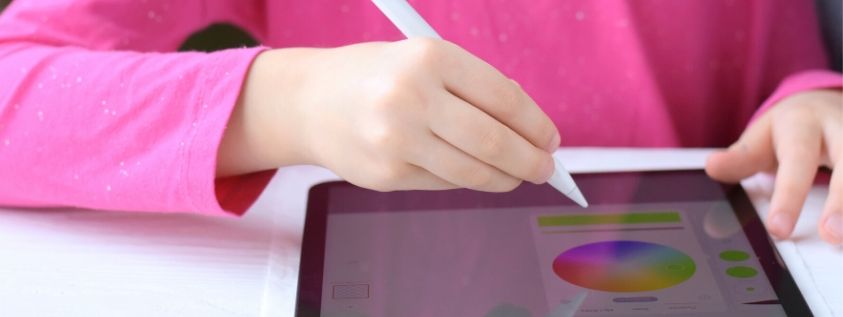Effects of Technology on Art and Art Education
Art education, much like all education, shifted greatly during the beginning of the technology boom and continues to evolve and develop. There are so many more possibilities in the art world, and technology is more readily available to schools and art educational programs now. Students have more opportunities to learn about art and create art than ever thanks to emerging and revolutionary technological advances within the art community. Here are some of the effects of technology on art and art education.
Access to More Media Types
With more technology emerging, students have the ability to access more types of media than ever. While traditional paint and canvas, pencil and paper, and clay are all still widely used in the art educational community, now programs can include graphic design, animation, digital photography and other forms of computer generated art. With more media types, art education can expand into uncharted territories which allow for more artists and art enthusiasts to enter the world of art.
Art Creation – The Digital Workflow Gap
The Millennial generation of ceramic artist has moved, in a significant way, from paint and brush to computer generated art. At the beginning of this trend there was a gap in the artist workflow – how to put that computer imagery onto a piece of sculpture or a functional ceramic piece. With the help of new technology, specifically LASER ceramic decal printers, that computer art can be printed in full color and high resolution, and kiln fired for a permanent computer generated decoration. This allows the artist to produce their work much faster, significantly increasing their potential to sell more art. With art becoming a less time-consuming task, there is the potential for the “starving artist” to become a much smaller reality than it has been in the past.
Art is More Inclusive and Accessible
With constant technological advances in computer graphics, art is becoming accessible to more people than ever before. The evolution of digital photography means that photography itself has a much greater reach. People no longer need to wait in a dark room to develop photos and essentially everyone, professional artist or everyday crafter, can use their own digital photography or computer art to create uniquely personalized functional items. Custom printed ceramic tiles, personalized house markers, tableware for the home, murals for the kitchen backsplash or bathroom can be made from anyone’s digital imagery or photography. Digital ceramic decal printers make it possible for anyone to produce high-quality personalized products because it is low cost, easy to use, and enables the artistic expression in all of us. People of all abilities and ages can now express themselves artistically because of the advances in technology.
Art As a Businesshttps://www.ceramicprinting.com/digital-ceramic-and-glass-printing-systems/
Before the technology days, art education was limited to a formal classroom or apprenticeship and art creation, while a labor of love, took long hours for each piece. The time factor often limited the financial potential of the artists. Now, any artist, from the comfort of their own home, can use digital technology, computers, cameras, or ceramic decal printers to increase the reproduction of their art and make it broadly available to their local community and beyond. That increased market is easily served with items made using new technology tools. Even those who are not formally trained in the fine arts but have an entrepreneurial spirit, can make personalized items using art from their customers located essentially anywhere. With little more than a few technology tools and from their own home almost anyone can produce personalized items custom decorated with their own digital imagery or imagery from their customers. Perhaps Monet would have lived far more comfortably if he had today’s technology to spread his art to a greater audience.


